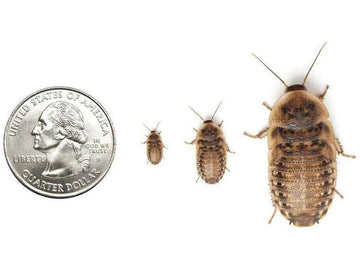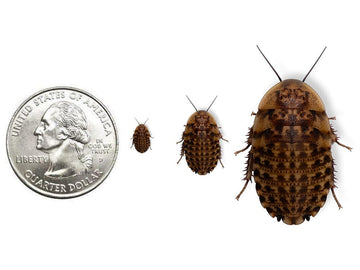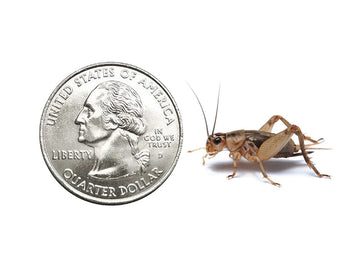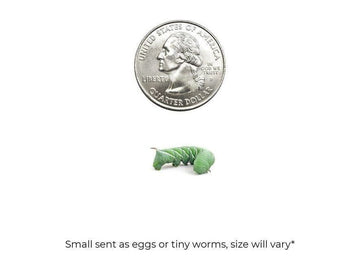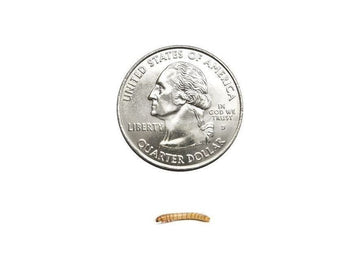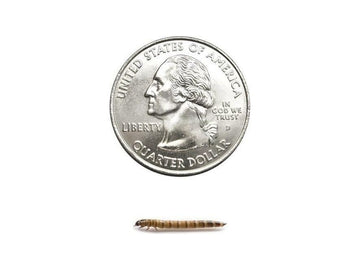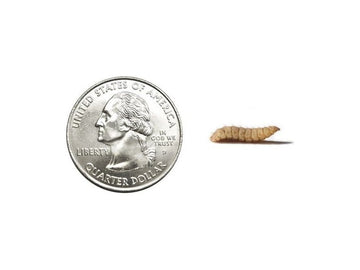Argentine tegus (Salvator spp.) are 3-5’ long, diurnal, terrestrial lizards native to the southern half of South America. They prefer humid, grassy or forested areas for habitat, and are rarely found in trees or water.
Argentine tegus are robust, strong-looking lizards with a blunt triangular head, thick neck, thick, tapered tail, muscular limbs, and a long, forked pink tongue. Mature males feature prominent jowls, and are generally larger than females. Salvator merianae has a black and white pattern, Salvator rufescens has a red and white pattern, and Salvator duseni has a yellow and black pattern.
Despite their popularity, Argentine tegus are not easy animals to keep as pets. They’re large, active, messy, and demanding. However, when kept with patience and dedication, they can be very rewarding. With good care, an Argentine tegu can live 20+ years.
Minimum recommended enclosure size for Argentine tegus
The minimum recommended enclosure size for a single Argentine tegu is 8’L x 4’W x 4’H. This may seem huge, but keep in mind that these are large lizards that still need access to an appropriate temperature gradient. Of course, if you can manage it, larger is always better! Regular supervised free-roaming opportunities is also recommended.
We do not recommend housing tegus together. However, tegus can be considered social and sometimes do okay being cohabitated. This is only recommended if you are experienced, familiar with the species, and fully ready for the commitment of the requirements involved. Two females or two males can be housed together, however, the enclosure would have to be at least double the recommended size for one. We do not recommend cohabitating a male and female. This causes too much stress on both individuals. You also want to make sure each tegu has its own private area where they can escape the other if needed. Both tegus should also be of around the same age, if they are too far apart, the smaller/younger tegu is at risk of being eaten. Individual personalities should also be taken into account. If you see any kind of negative interactions, you should reconsider cohabitating.
Do Argentine tegus need UVB?
Yes! Argentine tegus require UVB lighting to thrive in captivity. UVB lighting helps provide a clear day/night cycle, provides all of the vitamin D that your pet needs, strengthens the immune system, facilitates better digestion, and other benefits. Here are the recommended UVB bulbs for Argentine tegus housed in a 8’x4’x4’ enclosure:
- Arcadia Desert 12%, 46”
- Zoo Med Reptisun T5 HO 10.0, 46”
For best results, house the UVB bulbs in a fixture with a reflector. Position the lamp on the same side of the terrarium as the heat lamp. If the UVB is mounted over mesh, it is recommended to place the basking platform 13-15” below the lamp. If the UVB is mounted inside the enclosure, place the basking platform 17-18” below the lamp.
They are also likely to benefit from plant grow lights as part of their environment as well. You can add a ~6500K LED or T5 HO fluorescent grow lamp to provide extra illumination, as well as help any live plants in the enclosure to thrive.
We recommend lighting to be on 8-12 hours per day, depending on the time of year. You can do less hour on in the winter and more hours on in the summer. Remember to turn lighting off at night.
Best temperature for Argentine tegus
Argentine tegus do best with a basking surface temperature of 125-135°F, as measured by an infrared temperature gun. The cool side should be between 75-85°F, as measured by a digital probe thermometer.
You can provide heat for your tegu with a cluster of halogen heat bulbs placed above the basking platform. You will want enough lamps to evenly heat an area at least the size of the tegu’s body. We do not recommend ceramic heat emitters (CHEs), red bulbs, or blue bulbs, as these are not as effective. If your temperatures are too high, you can consider a lamp dimmer or rheostat to lower the intensity.
Best humidity levels for Argentine tegus
Argentine tegus prefer a high-humidity environment, so the humidity inside their enclosure is best when its fairly high: about 70-80%. Humidity can be measured via digital probe hygrometer, with the probe placed in the middle of the terrarium.
You can increase humidity by misting the enclosure 1-2x/day with a large pressure sprayer or automatic misting system. We recommend misting first thing in the morning and then again at night if needed. If you need more help maintaining humidity, you can install a cool mist humidifier connected to a humidistat. Pouring water directly into the substrate can be very helpful as well.
Best substrate for Argentine tegus
Providing a layer of naturalistic substrate (“bedding”) in the enclosure will help maintain correct humidity, cushion your tegu’s body, provide a digging medium, and also help make your enclosure more attractive!
We recommend the following substrates for tegus:
- Zoo Med Eco Earth
- Zoo Med ReptiSoil
- Exo Terra Plantation Soil
- Zilla Jungle Mix
- Home-made soil/sand mixture
Layering clean, chemical-free leaf litter on top of the substrate can help with humidity as well as add enrichment value.
We suggest substrate to be at least 6” deep and completely replaced every 3-4 months. Remove poop and urates daily, along with any contaminated substrate.
How to decorate an Argentine tegu enclosure
An empty enclosure makes for a bored tegu. Keep your pet entertained and engaged with its environment with the strategic use of décor items that encourage it to exercise natural behaviors!
Here are some ideas to get your started:
- hideouts/caves
- more branches
- ledges
- live or artificial foliage
Training and designing enrichment activities are also good ways to help keep your tegu engaged, as well as provide a nice opportunity for bonding! They are extremely smart reptiles.
What to feed to an Argentine tegu
Argentine tegus are omnivorous, which means that they require a diet of both plants and animals to get the nutrition that they need. How often and how much they need to eat depends on age:
- Hatchlings (0-6 months) — 5x/week (90% protein, 10% vegetables and fruit)
- Juveniles (7-12 months) — 4x/week (90% protein, 10% vegetables and fruit)
- Subadults (1-2 years) — 3x/week (60% protein, 30% vegetables and 10% fruit)
- Adults (>2 years) — 2x/week (60% protein, 30% vegetables, 10% fruit)
The key to providing a healthy, balanced diet for your tegu is VARIETY. Here are foods that are appropriate for an Argentine tegu to eat:
Feeder insects for Argentine tegus: crickets, dubia roaches, red runner roaches, black soldier fly larvae, mealworms, superworms, darkling beetles, hornworms, silkworms, snails, grasshoppers
Meat options for Argentine tegus: chicks, quail chicks, egg (with shell), mice, rats, gerbils, small rabbits, shrimp, salmon, high-quality canned dog food, bass (cooked), catfish (cooked), tuna (cooked), whitefish (cooked)
Safe vegetables for Argentine tegus: collard greens, cactus pads, spring mix, arugula, kale, pea shoots, alfalfa, bok choy, carrot greens and roots, spinach, dandelion greens/flowers, hibiscus leaves/flowers
Fruit is high in sugar and should only be offered as an occasional, vitamin-rich treat. Options include berries, figs, apples, prickly pear, papaya, and mango.
Supplements
You will also want calcium and vitamin supplements to help keep your pet healthy. We recommend Repashy Calcium Plus LoD, lightly dusted on all foods except whole prey, cooked food, and dog food. It’s okay to occasionally skip a dusting.
Water
We recommend a large, shallow tub of water for your tegu to drink from and soak in. You should change the water at least twice a week and scrub the bowl with a reptile-safe disinfectant weekly, or whenever it becomes soiled.
How to handle your Argentine tegu
Reptiles generally don’t appreciate petting and handling in the same way that dogs and cats do. However, Argentine tegus are generally quite tolerant of humans when well socialized. Still, bear in mind that each has its own personality, so results will vary. Some tame down well, while others prefer to be left alone.
If you want to build a trusting relationship with your pet Argentine tegu, you will need to develop a foundation of positive interactions. Offering food from feeding tweezers works well as an initial bribe, and it’s best to get the lizard to come to you rather than simply grabbing it.
Here are some more tips for success:
- Don’t grab the lizard from above. Instead, scoop from below.
- Support as much of its body as possible.
- Start with short handling sessions at first, then gradually make them longer.
- Put the lizard back in its enclosure only when it’s calm.
*This care sheet contains only very basic information. Although it’s a good introduction, please further your research with high-quality sources. The more you know, the better you will be able to care for your pet!


